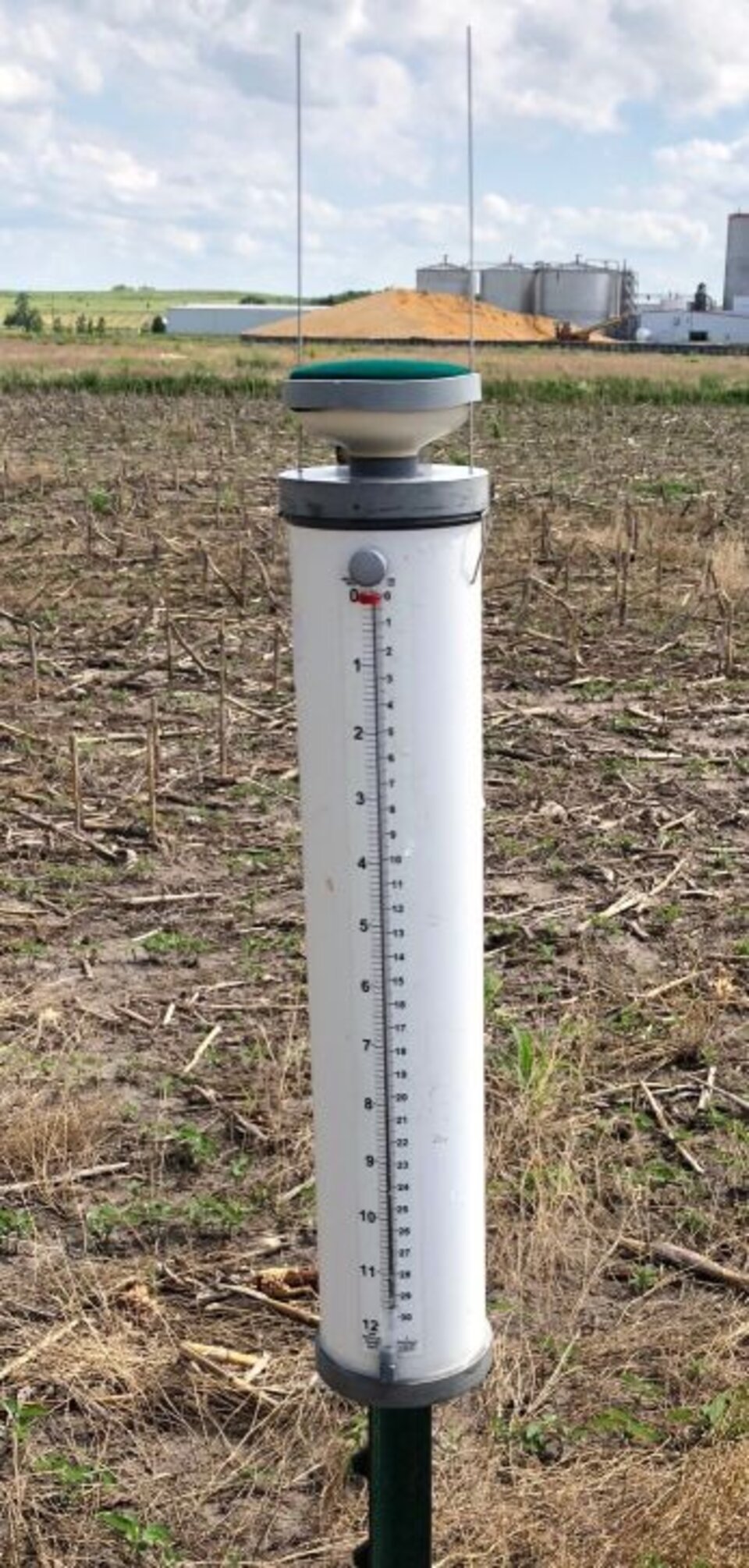Determining Crop Water Use

Do you know how much water your crop is using on a daily basis? When I ask this question most guys tell me somewhere between 0.20 - 0.40 inches per day. Sometimes they are close but wouldn’t it be nice to know for sure? It is rather simple to figure out if you have the right tools.
An atmometer, such as the ETgage®, is what you need to calculate reference ET. ET stands for evapotranspiration. This is the amount of water evaporated from the soil and plant surface and transpired through the plant.
An ETgage costs about $250 and can be placed on the outer edge of a field attached to a post. It is filled with distilled water and should be read once a week. It has a ceramic plate on it that allows water to evaporate from the unit. In addition there is a canvas cover simulating the crop characteristics, typically for alfalfa. As you can see from the photo it has a sight gage on the side that allows you to read how much water evaporated during the week.
Next, you have to take into consideration the crop being grown and the growth stage it is currently in. This is called the crop coefficient (Kc). You simply take the weekly reference ET reading and multiply it by the Kc value to get the water use per week. The Kc values are available for most of the common crops grown in Nebraska at https://nawmn.unl.edu/GrowthStageData.
Here is an example of how to figure ET. I have an ET gage in a field located in Valley County, Nebraska. The reading over the past week was 1.8”. This is a corn field at the V6 growth stage. We refer to the chart of Kc values and find that it is 0.35. We then multiply 1.8” X 0.35 and get 0.63”. Divide this figure by seven days in the week and we have 0.09” of water used per day this past week. So as you can see, when the crop is early in its development, it is not using much water each day.
If you want to learn more about using an ETgage, feel free to contact me at the Extension office or you can download this publication off the UNL website. Using Modified Atmometers (ET gage®) for Irrigation Management
This article was reviewed by Aaron Nygren & Chuck Burr